NH00 Fuse Links RT16-00
| Item NO. | Rated Current In | Rated Voltage Un | Breaking Capacity (with Fuse) |
| RT16-00
(NT00/NHOO) |
In:2A,4A,6A,8A,10A,12A,16A,20A,25A,32A,40A,50A,63A,80A,100A,125A,160A(500VAC/250VDC);
In:2A,4A,6A,8A,10A,12A,16A,20A,25A,32A,40A,50A,63A,80A,100A(690VAC) |
500VAC
690VAC 250VDC |
120KA(500VAC)
50KA(690VAC) 100KA(250VDC)
|
 Product drawings
Product drawings
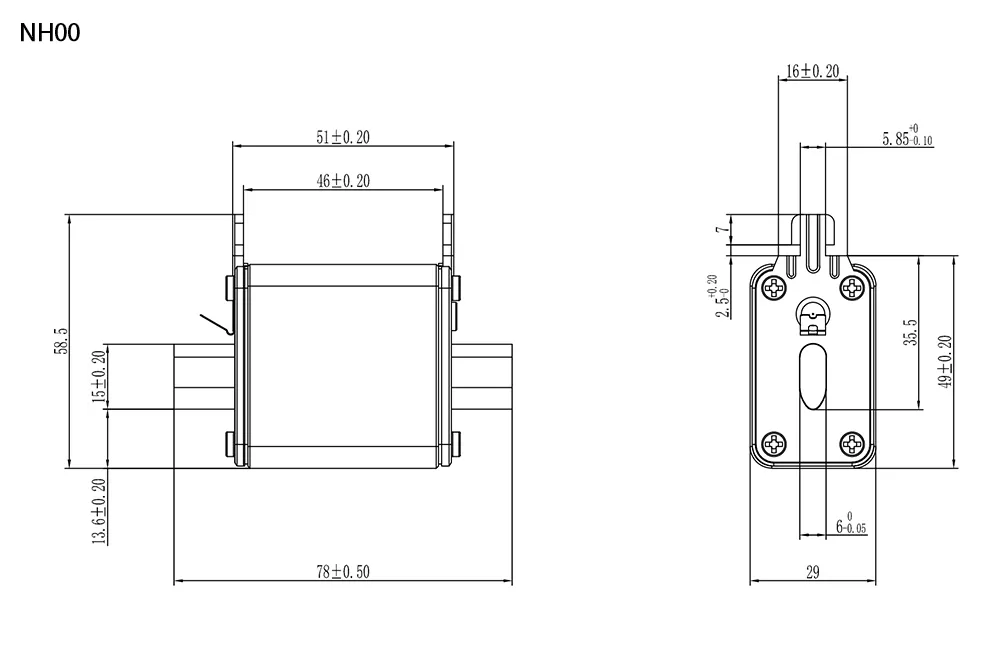
Fuse Link parameters
| Product Item | RT16(NT/NH)Fuse Link |
| Rated Current | 2A-630A |
| Rated voltage | 500VAC/690VAC/250VDC |
| Breaking Capacity(kA) | 120kA(500V),50kA(690V) |
| Standard | IEC 60269,CE |
| Applications | Power control system, industry electrical equipment |
The components of the fuse link
The fuse is mainly composed of cover plate, plug, knife contact, fuse element, filler and ceramic body.
Cover plate:GRLadopts high strength aluminum alloy. The surface embossing makes the product more beautiful and the design of stiffener makes the product more firm and reliable.
Plug:GRLadopts high strength nylon material, which is more resistant to high temperature
Knifecontact:The integrated design rather than riveting structure of copper has stronger performance and lower temperature rise.
Fuse element:GRLadopts high performance copper strip, and the fuse element layout design is more reasonable and breaking capacity is stronger.
Filler:GRLadopts silica sands in high purity.
Fuse body:GRLadopts high frequency porcelain. Fuse Links
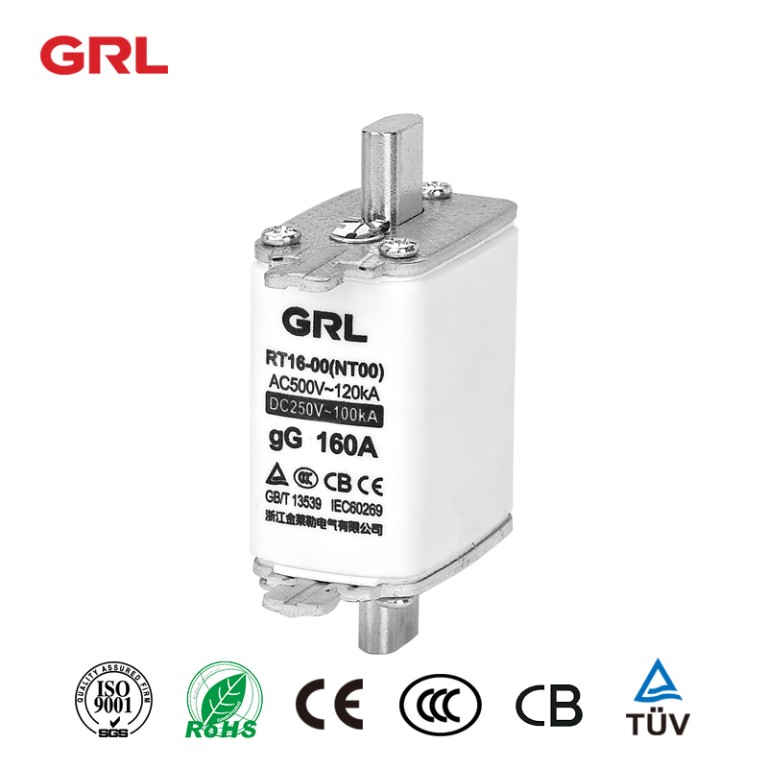
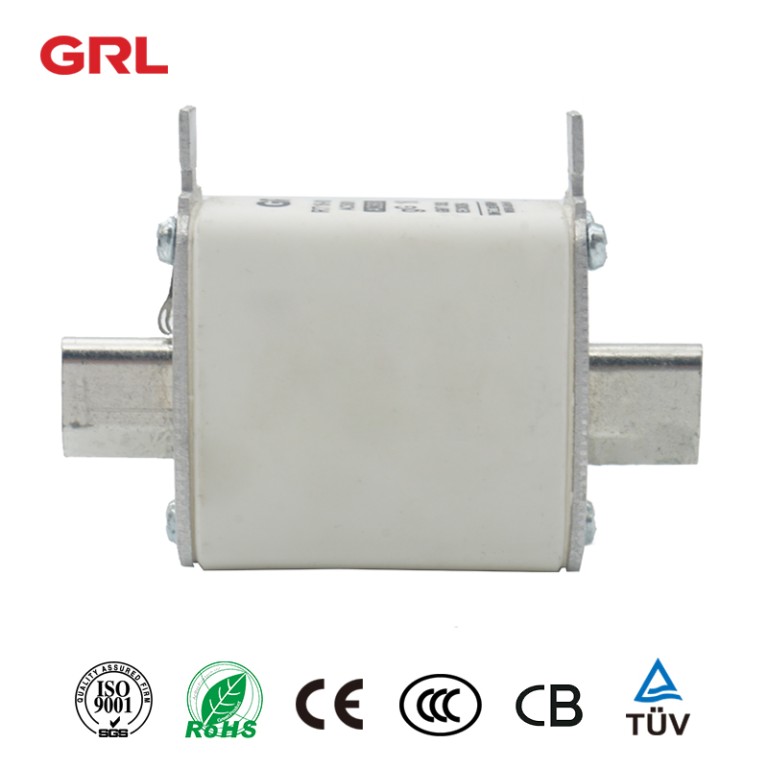
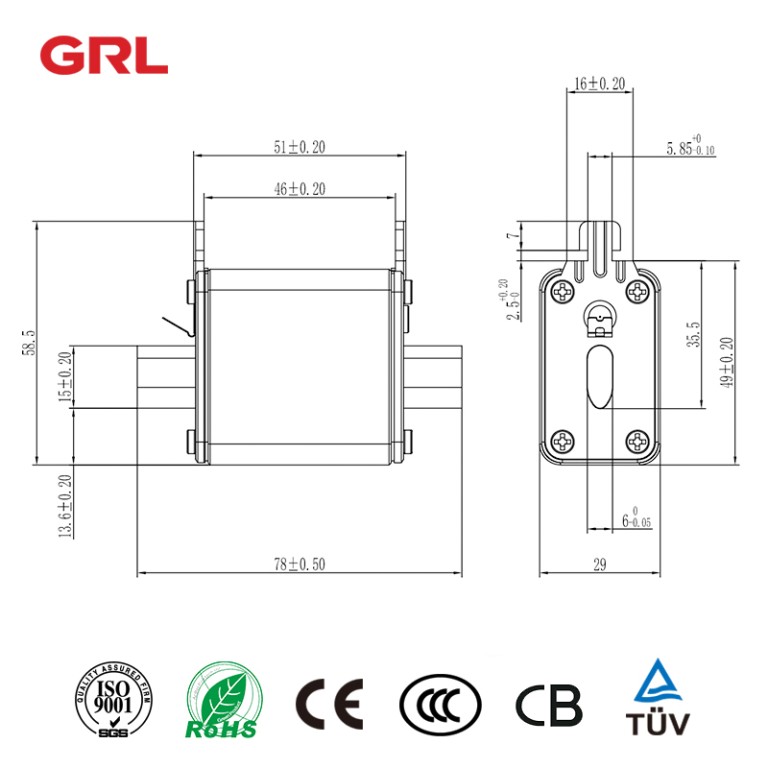
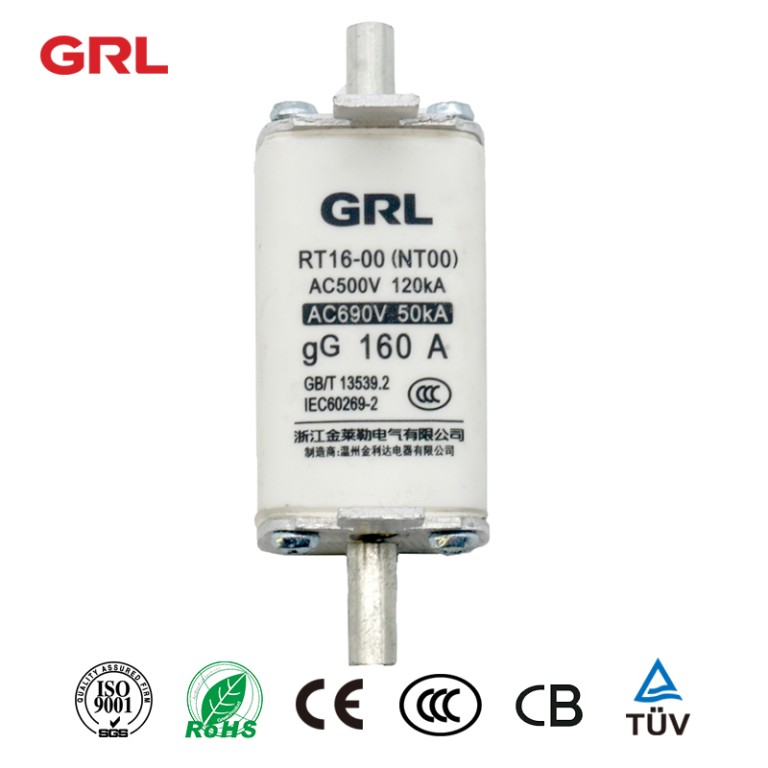
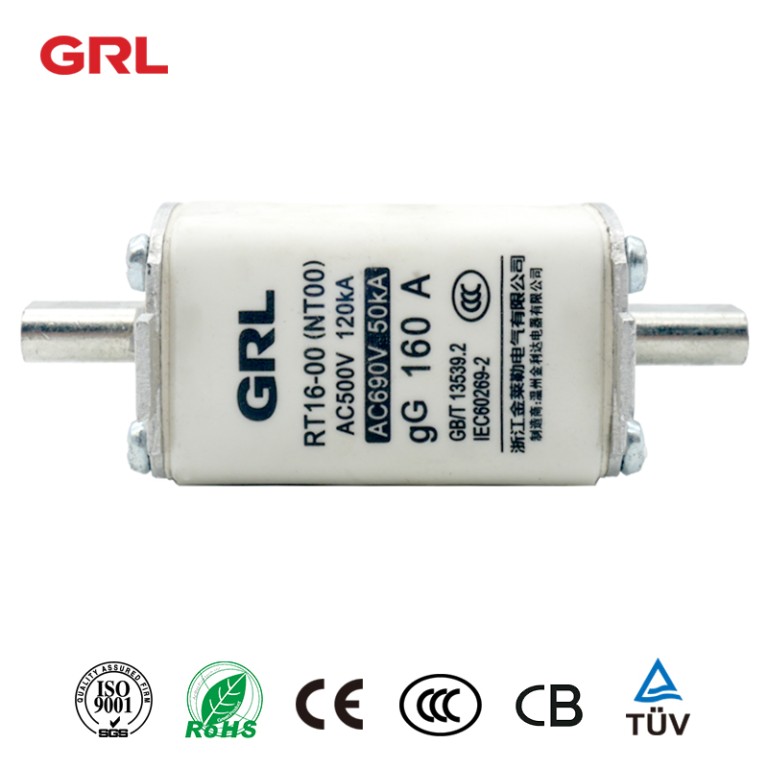





 Product drawings
Product drawings